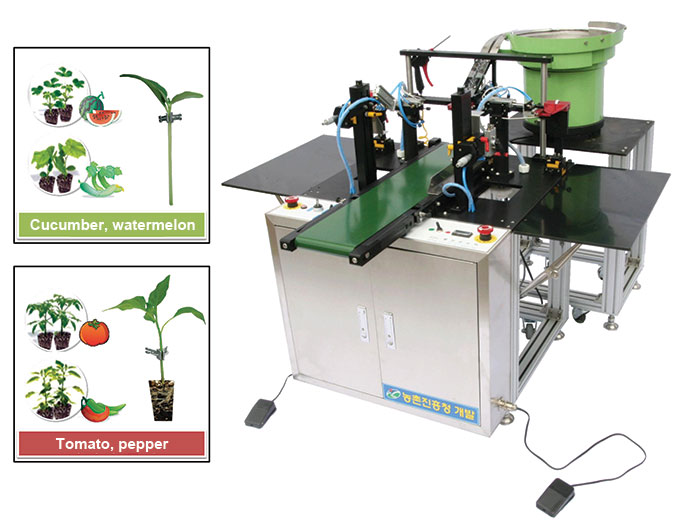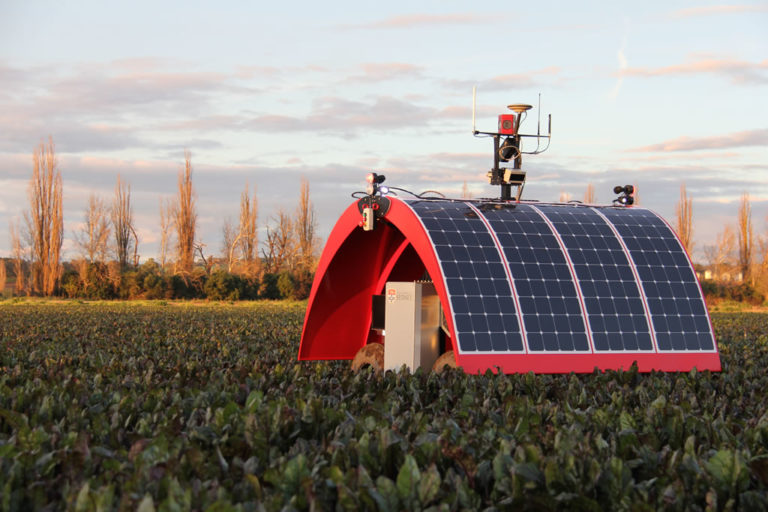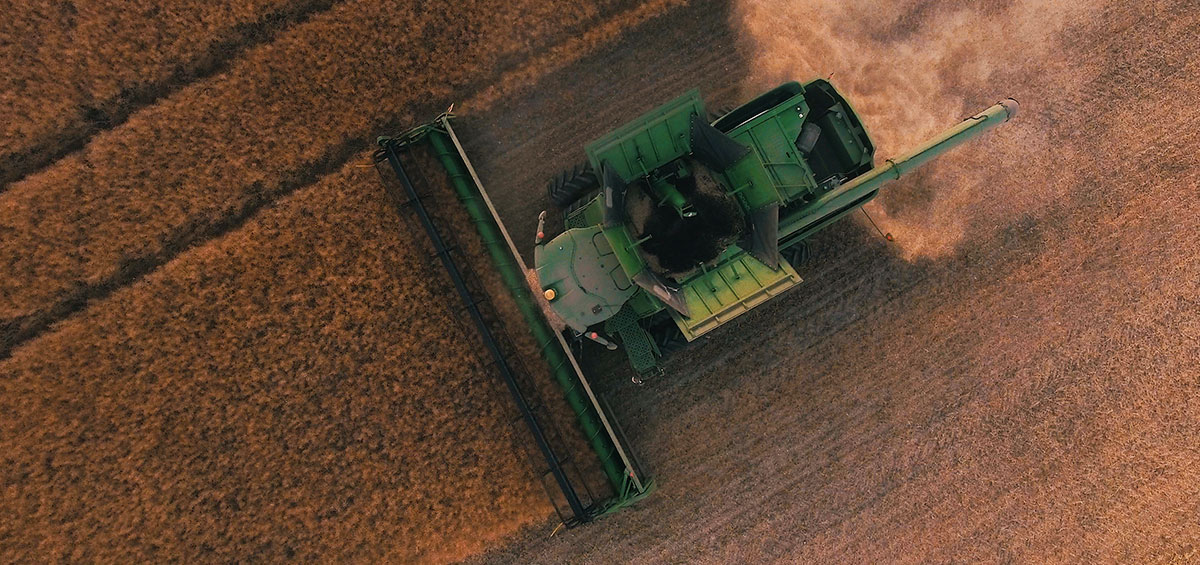Researchers worldwide are developing ways and means to mitigate the problems faced by the rural population.
Lack of rural development, in terms of mainly farming, industries and infrastructure have led to wasteland, from acres to patches. Thus the rural population migrates to semi-urban and urban areas in search of menial jobs. Robotics has begun the transformation of the rural landscape, creating the economy and addressing labour shortages.
The succeeding examples throw light on the role of robotics as a game changer in rural development in the fields of :
- Farming
- Education
- Healthcare
- Transportation
AFGR-800CS-The Grafting Robot for Vegetables and Fruits
Developed by the Rural Development Administration (RDA), South Korea, this grafting robot can lift the burden off the farmer. This RDA’s commercialized robot can be used to graft fruits and vegetables, such as watermelon and cucumber, as well as vegetables, like pepper or tomato.
Upon pressing a button, the robot can automatically recognize the size and characteristics of the vegetable or fruit to be grafted. When the operator inserts both a shoot and a parent stock, the piece onto which the shoot is going to be grafted, the robot conveys, cuts and connects the two pieces of plants.
How the robot outclasses the manual process?
- The processing rate of 600 to 900 shoots and parent stocks per hour
- Almost thrice more productive than the traditional manual process.
- Consistency in the way the two parts (parent and shoot) are connected
- The rate of shoot survival of 95 percent.
The robot was developed in 2008 and 80 of them are now in use in 13 countries around the world including Italy, Mexico, the United States, China, Russia, Greece, Japan etc. The Ministry of Trade, Industry and Energy and the Korea Trade-Investment Promotion Agency are together promoting this product worldwide.

The grafting robot developed by the Rural Development Administration can graft together fruit and vegetable plants. (Image Courtesy: RDA)
Ladybird- The Weed Killer
the ACFR unveiled one of its latest creations, the Ladybird, a sophisticated autonomous robot powered by solar energy that is capable of undertaking a variety of monitoring and evaluation tasks. It’s also an efficient killer, as it slowly wheels its way around a paddock it can locate and eliminate individual weeds by means of a targeted sprayer.
Ladybird can drive up and down the rows of an orchard, and be using all of the sensors, can put together a complete picture of the trees and how the crops are growing. It can automatically detect and count flowers and fruit and give maps of that information to growers. Growers can look at the information covering their orchard and they can identify trouble spots and work out how to address those problems so that they can get really the maximum output from their acreage.
As Ladybird handles the chemicals, it safeguards the rural population from a work, health and safety point of view.
Small robotic units (bots) called ‘Agbots’ have been developed, that can be deployed on farms to take on the work that was once done by humans.

Ladybird is an Autonomous Farm Robot Capable of Conducting Mobile Monitoring of a Variety of Different Crops. (Image Courtesy: Australian Centre for Field Robotics at the University of Sydney)
iRobiQ-The Educational Robot
Robots may be particularly useful in rural schools, due to the challenges rural areas face with low student numbers, low funding, a lack of specialist teachers, and isolation. Often, studying in an upscale education centre is a far-off dream for rural students.
iRobiQ looks more like a traditional robot and is used in early childhood education in Korea to teach English, entertain by singing and dancing, telling nursery rhymes, and deliver other educational content. It has speech and face recognition capabilities and can communicate with basic facial expressions and speech.
Robots in schools are generally seen as a useful aid for teaching students about engineering and robotics, and as teaching assistants for scientific or foreign language subjects.
Husky-Water Hauling Robot
Water is the elixir of life ,and the rural areas have a scarce supply of running water or have fewer taps. For those without running water, they have to get it from often over 1 Km away and haul it back, a process that consumes almost 5 hours per day. Amol Deshmukh of the University of Glasgow has presented a new human-robot interaction study through Husky-the water hauling robot.
Husky is a rugged, medium-sized robotic platform. Its large payload capacity and power systems accommodate an extensive variety of payloads, Stereo cameras, LIDAR, GPS, IMUs, manipulators and more can be added to the UGV. Husky UGV was equipped with a water crate that can hold three jugs of water. When the designated consumer contacts the robot, it uses a bluetooth speaker and prompts the operator to fill in and load the jugs. Then Husky transports the water to the designated homes.
iRobi.-The Healthcare Robot
The rural population, particularly, the old and elderly or patients with chronic conditions are disadvantaged by the lack of proper healthcare facilities.iRoBi was developed jointly by the departments of the Auckland University’s School of Engineering and Psychological Medicine at the University of Auckland.
iRoBi provides benefits for patients in:
- Reducing the need for medical care
- Increasing quality of life
- Reminding patients to take medicine on time and
- Providing companionship
The robot’s blinking lights enhances it’s social presence and helped them see when the surroundings were dark, late at night or in the morning, which was reassuring to patients.
Caring for older people with chronic conditions living independently-which is the most favourable option -in rural communities has many challenges, to name a few:
- Geographic isolation
- Lack of transport
- Shortage of medical care professionals
When the robot moves away from the patient, a feeling that a family member is missing arises. Such socially assistive robots like iRoBi and PARO fit the companionship model of such patients, reassuring them in times of need.
The cost of the sensors is coming down, yet, the accuracy and their capabilities are increasing dramatically. Similarly with motors and robotic arms, touchscreens etc. Precision robotic testing of touchscreens assures operational reliability. These are enablers to the development of a class of robots, where its simplicity belies its sophistication.
While the fear of robot-induced unemployment may worry many in cities and suburbs, in the rural areas, robotics will be a boon to the locals with job creations in various support activities and allied sectors. There are also major environmental benefits- cleaner and greener. Robotics opens a new world to the disadvantaged rural population on road to an economic win through productivity gains.
Get Automated
Applications of robotic automation are already in place in every industry. The time is “Now”! Get started right away with our customized product and service-based solutions.
Embrace the future. Contact us to save your time and money to deliver a quality product.
Sources:
- https://www.idtechex.com/research/articles/robots-in-rural-settings-00014013.asp?donotredirect=true
- https://phys.org/news/2015-11-robots-rural-elderly-healthcare.html
- https://www.idtechex.com/research/articles/robots-in-rural-settings-00014013.asp?donotredirect=true
- https://link.springer.com/article/10.1007/s12369-017-0460-5



Arun kedia
October 13, 2018We are from Nepal
We are interested in buying a plant grafting machine for tissue culture plants